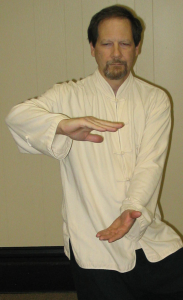How to Breathe to Stay Well
 If the past two years have taught us anything, it’s that our well-being matters. As we head toward the end of 2021, more of us are taking proactive steps to stay well.
If the past two years have taught us anything, it’s that our well-being matters. As we head toward the end of 2021, more of us are taking proactive steps to stay well.
At the same time, there’s a growing interest in optimization and performance. Across sports, fitness, education, and business, we’re looking for new ways to feel better and achieve our potential.
But behind these positive wellness trends, the story is a challenging one. Stress is currently a leading cause of illness worldwide, contributing to between 75 percent and 90 percent of all human diseases. And we’re still battling COVID-19 and the anxiety caused by related political and economic considerations.
As stress rises, a familiar adage springs to mind. We all need to “take a nice deep breath.”
Or do we?
As I explain in my book, “The Breathing Cure: Develop New Habits for a Healthier, Happier, and Longer Life,” the advice to take a deep breath is often misguided—if it doesn’t talk about how you take that breath. It can perpetuate stress and cause less oxygen to reach vital systems in the body. When told to breathe deeply, many of us take a fast, hard gulp of air through an open mouth and into the upper chest.
Unless you have a respiratory condition, such as asthma, breathing is something that happens in the background. Since it carries on without our help, we don’t often pay it much attention. But somewhere along the way, the stresses of modern life have created a situation where many of us habitually breathe in more air than our bodies need. Stress perpetuates a fast, shallow breathing pattern that disrupts vital blood gases. Once breathing is out of whack, it’s easy to get stuck in a vicious cycle. Your breathing becomes chronically fast and shallow. Your sleep is disrupted and stress sets in, increasing your risk of disease and stopping you short of your potential.
To correct dysfunctional breathing, you must first notice whether you breathe through your mouth or your nose. During the day, this is easy enough to spot. At night, it’s a little harder. If you snore or have sleep apnea, your partner may be able to tell you. If you sleep alone, there are signs to look out for.
If you regularly wake up with a dry mouth and bad breath in the morning, it’s likely that you mouth-breathe during sleep. After the age of 40 years, you’re around six times more likely to spend at least half of the night mouth breathing. Extra weight on the tummy, neck, and tongue also contributes to mouth breathing. And for women going through menopause, the risk of sleep apnea increases by 200 percent.
Nose breathing is vitally important for health and well-being. It improves the quality of inhaled air, filtering, warming, and humidifying it before it reaches the lungs. It provides a first line of defense against viruses, bacteria, and allergens. Your nose protects you against 20 billion particles of foreign matter every day. When it comes to breathing, the mouth really has no purpose except to serve as a backup, whereas the nose performs at least 30 functions on behalf of the body.
Benefits of Nose Breathing
When you breathe through your nose, the extra resistance results in 10 percent to 20 percent better oxygenation of the cells and organs.
Nose breathing is 22 percent more efficient than mouth breathing. This means breathing is easier, and your breathing muscles don’t get tired so quickly.
When you breathe through your nose, you breathe in the gas nitric oxide which is produced in sinuses around your nose. Nitric oxide helps sterilize the air as you inhale. It inhibits viral replication in COVID-19, and it protects against bacteria, fungi, and other pathogens.
Breathing in and out through your nose helps keep your airways clear. The carbon dioxide and nitric oxide in the nasal airway both act to dilate blood vessels, preventing your nose from becoming blocked. Nitric oxide also works to open the blood vessels in your lungs, allowing more oxygen to get into your blood.
Nose breathing during sleep eliminates mouth snoring and makes sleep apnea symptoms much less severe. During mouth breathing, your tongue can fall back into your airway, essentially choking you. Mouth breathing involves a faster flow of air, which increases the likelihood that your airway will collapse. Scientists have proven that when patients with sleep apnea mouth breathe during sleep, they stop breathing more frequently and experience worse oxygen desaturation.
When you exercise, nose breathing supports the body in several ways. It prevents exercise-induced asthma by protecting the airways from irritation and inflammation. It engages the diaphragm, which, in turn, supports the spine and core, reducing injury risk and improving healthy posture and physical movement. It causes you to exercise at a slower pace until breathing is properly trained, reducing blood pressure and stress and protecting you from over-training. Nose breathing also improves the oxygenation of your working muscles.
Although we generally think of oxygen as the most important breathing gas, the human body also needs a healthy balance of carbon dioxide to survive. Most of the oxygen you inhale travels around your body in the hemoglobin in red blood cells. Carbon dioxide is important because it’s the catalyst that releases this oxygen to your tissues and organs.
When you breathe hard and fast through an open mouth, you’ll tend to blow off too much carbon dioxide. That means that, although you’re breathing more air, there’s less oxygen available to your body. Nasal breathing helps normalize levels of carbon dioxide, and it slows down your breathing, so air spends more time in your lungs. That’s one reason why nose breathing provides better whole-body oxygenation.
Nose breathing activates areas of the brain that are essential for focus and concentration. It increases blood flow to your brain and helps you get in the zone. Conversely, mouth breathing can activate your fight-or-flight stress response, which switches off the areas of your brain that are involved in things such as problem-solving and memory. Long-term activation of the stress response kills brain cells, actively shrinking your brain.
By restoring nasal breathing, you’ll automatically begin to normalize your breathing volume and reduce the amount of air you breathe into your body. This is important because it promotes good health, keeping you well.
Nasal breathing naturally slows your breathing. If you breathe fast and hard through an open mouth, you’re breathing a higher volume of air. A bit like overeating, the body gets used to the excess, leaving you in a constant state of air hunger. When you breathe too much air all of the time, you create sickness in the body. Over-breathing is linked with conditions from cardiovascular disease to sexual dysfunction, chronic pain, dental decay, diabetes, PMS, and every disease in which stress is a contributing factor.
One problem with over breathing—or to give it its medical name, chronic hyperventilation—is that it disrupts levels of carbon dioxide in your blood. Carbon dioxide has a very important role in keeping us alive. When carbon dioxide levels are low, the bond between the hemoglobin in red blood cells and oxygen becomes stronger. Even if your blood is fully saturated with oxygen, that oxygen can’t get to where it’s needed in the body. Imagine a delivery driver who’s driving to drop off a load of parcels and discovers that the lock on his van is jammed. He can drive to the shipping address, but he can’t deliver the package.
Healthy breathing shouldn’t be a fleeting trend. The task is to build new, healthy habits. The way you breathe affects your ability to focus on important tasks. It affects your sleep and your stress levels. You can use breathing exercises to enhance your performance in sports and at work and to directly counter stress. Healthy breathing supports your spine and strengthens your breathing muscles. It reduces anxiety and common symptoms such as headaches and back pain. Functional nose breathing improves your circulation and the health of your airways and lungs. It boosts oxygen delivery to your cells and optimizes vital connections between your breathing system, heart, and blood pressure.
This runs deeper than integrating a breathing exercise or two into your day. If you want to restore nasal breathing for better health and longevity, this is a 24/7 commitment. But it doesn’t need to be difficult. Don’t wait until you get sick. The simple steps below can support your health, performance, longevity, and quality of life.
Techniques to Restore Nose Breathing
 First, take time to notice when you breathe through an open mouth. It’s common to open the mouth to breathe during exercise, but you may also mouth breathe when you’re concentrating, whether you’re at work, driving, or watching TV. Each time you notice yourself mouth breathing, close your mouth and breathe through your nose.
First, take time to notice when you breathe through an open mouth. It’s common to open the mouth to breathe during exercise, but you may also mouth breathe when you’re concentrating, whether you’re at work, driving, or watching TV. Each time you notice yourself mouth breathing, close your mouth and breathe through your nose.
If your nose is blocked, use this nose unblocking exercise:
Sit upright in a straight-backed chair.
Calm your breathing.
Take a small breath (two seconds) in through your nose if you can, and a small breath (three seconds) out through your mouth.
If you can’t breathe in through your nose, take a tiny sip of air in through the corner of your mouth.
After the exhale, pinch your nose to hold your breath. Keep your mouth closed.
Gently nod your head up and down or sway your body from side to side until you can’t hold your breath any longer.
Let go of your nose and breathe in gently through it. Your breathing should be calm and relaxed.
Repeat the exercise until you can breathe fully through both nostrils. If your nose won’t completely unblock, wait about a minute, and repeat again.
After the exercise, your nose should be clear. But if you continue to over-breathe, it will block again. As you work with breathing exercises and nasal breathing, this will resolve in time.
When you exercise, train yourself to breathe only through your nose. It takes about six weeks for the body to adapt, but it’s worth the effort.
If you have a small nose, a deviated septum, or some other nasal obstruction, try a nasal dilator. This will open your airways and make nose breathing easier.
Integrate breathing exercises into your day. I recommend exercises that reduce breathing volume and normalize tolerance for carbon dioxide. These delay the onset of breathlessness and help restore healthy breathing. You can find these exercises in my books.
Spend 10 or 15 minutes before sleep slowing down and reducing your breathing. This will calm your mind and reduce your susceptibility to snoring and sleep apnea.
You can also tape your mouth at night using a variety of products, including my own patented sleep tape, MYOTAPE. These products go around the mouth rather than sealing the lips. Tape is the only surefire way to keep your mouth closed when you’re asleep, and it will help prevent sleep-disordered breathing, snoring, and sleep apnea.
If you regularly notice yourself mouth breathing, you can also wear tape for periods during the day until you’ve built a new healthy habit of nose breathing.
Patrick McKeown is an internationally renowned breathing coach, author, and speaker. He’s the creator of Oxygen Advantage®, founder of Buteyko Clinic International, and a fellow of the Royal Society of Biology in the UK. His published works include research in the Journal of Clinical Medicine and books including “The Oxygen Advantage,“ “The Breathing Cure” and “Atomic Focus.”
T‘ai Chi Breathing Fundamentals
By Master Rothrock
 Every posture in T’ai Chi has a breathing pattern to follow. The pattern is easy to understand, but difficult to master. The important element of breathing is the coordination of the breathing pattern with the action of the T’ai Chi posture. This slows down your heart rate, helps you relax, and gives you control over your breathing.
Every posture in T’ai Chi has a breathing pattern to follow. The pattern is easy to understand, but difficult to master. The important element of breathing is the coordination of the breathing pattern with the action of the T’ai Chi posture. This slows down your heart rate, helps you relax, and gives you control over your breathing.
Breathing is very important for controlling your emotions and avoiding stress. When you’re upset, your breathing is rapid. This speeds up your heart and causes tension throughout the body. When you’re happy, your breathing is slow and even and you feel a sense of euphoria and peace. In fact, some recent studies show that stress is becoming the number one health problem, so it makes sense to learn how to relieve stress and relax.
The mind plays a key role in relaxation. The Chinese believe that the mind controls the body. Your mind must stay clear and un-muddled during the T’ai Chi exercise. If your mind is unsettled, so will be your body. Keep your mind clear like a lake in the early morning. Do not let any thoughts disrupt your mind. A disturbing thought is just like throwing a stone into a calm lake. It creates ripples all the way to shore.
I’ve included the breathing pattern for each posture in the manual. However, I recommend that you master the gross movements first and the coordination between the weight shifting and the hand motions. In the beginning, your breathing will follow your movements. For example, as you push forward with your hand, you’ll concentrate on coordinating the exhalation of the breath with the action of the hand.
In the advanced stage of T’ai Chi, your body follows the breath. In other words, as you push forward with your palm, the speed of the push follows the exhalation of the breath. The faster you breathe, the faster you execute the posture. The slower you breathe, the slower you do your posture.
As you do your postures, do not swallow. Collect the saliva underneath the tongue. This is sometimes called, The Golden Elixir of Life. By swallowing this elixir (saliva) at the end of the routine, nourishes your body and keeps you healthy.
- To begin your breathing for T’ai Chi, place the tongue on the roof of the mouth behind the upper teeth.
- The mouth remains closed throughout the T’ai Chi routine.
- Inhale through the nose.
- Imagine the air traveling around the back of your head and down your spine.
- Fill up your lower abdomen only by relaxing the muscles and letting the air fill it like a balloon.
- Exhale normally and bring the air up the center of your body and out your nose.
- Gently push the air out by pushing in the muscles on the abdomen.
- Keep the shoulders relaxed and rounded to prevent the air from rising into the upper chest area.